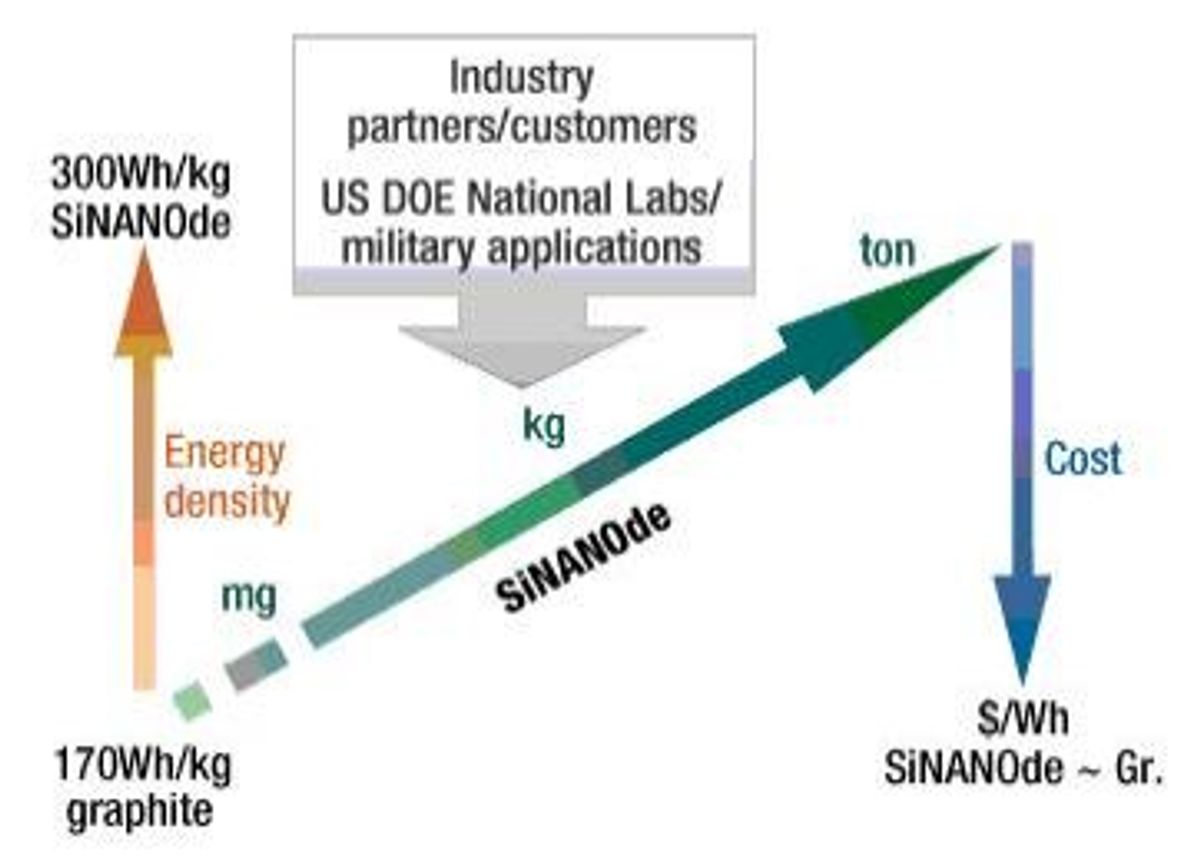Nanosys, the Palo Alto, CA-based nanomaterials company, which has long been touted as the IP King of Nanotech with over 500 patents for nanomaterials, has made an announcement recently about a nanomaterial to improve Li-ion battery capacity.
Yimin Zhu, director, battery & fuel cell, at Nanosys, made the announcement while speaking at the IEEE Bay Area Nanotechnology Council lunch forum last month. While the article is light on specifics, it seems that the company has developed a silicon-based, “architected” material that fills in the voids of the carbon anode material matrix.
According to Nanosys’s claims, the material “remains intact and fully functional after 100% DoD cycle testing.” It also “demonstrated a >2× capacity improvement using 10% additive in a Li+ battery anode.” I managed to glean from the graphic below that the new material will increase density to 300Wh/kg from 170Wh/kg of a graphite coating, and do so with the addition of cutting costs.Anyway, Nanosys is still in the business of making nanostructured materials (or should that be nanoarchitected materials?) and finding industry partners to apply these materials to some device.
Last year, at the CES show they were demonstrating how a nanomaterial they had developed could make the color of LED lights more vivid. On their website, they have a business unit called “LED backlighting”, but I haven’t heard whether they have started shipping that material to LED device manufacturers in bulk.
According to the article in which Zhu is quoted, “volume revenue shipments are expected in 2011” for the material that promises to boost Li-ion battery capacity. I would like to hear later how it all works out because over the years I have developed some serious doubts about companies that are just selling nanomaterials rather than actual devices and other products.
Dexter Johnson is a contributing editor at IEEE Spectrum, with a focus on nanotechnology.




